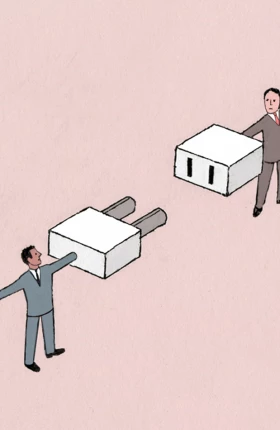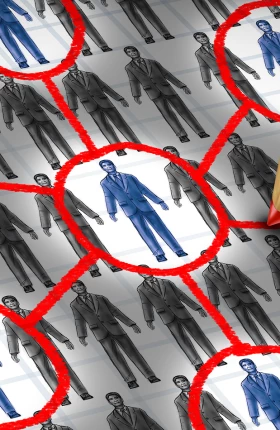A fast-changing global business environment is pressuring companies to rethink their internal and external customer-delivery models and accelerate their transformation agendas. The HR function can serve as the catalyst for such transformation by helping to create future-ready organizations—the kind of businesses that can keep pace with rapid technology advancements, manage a gig economy that demands flexible and remote work options, and retain the best talent.
To meet these expectations, HR departments must first be willing to transform themselves. They need to reexamine their own people strategies, organization structures, processes, and staff capabilities while leading by example in embracing technology. By doing so, HR can play a central role in building customer-centric organizations, driving business priorities, and delivering value.
FIVE KEY PRIORITIES
As we look to the future, we see five priorities that will guide businesses through the changes to come—principles that, in turn, should define the strategies of HR functions everywhere.
Employee Centricity. Adopt a people-first approach to meet current and future talent demands and to offer a seamless employee experience. Organizations are in a war to attract, develop, and retain the best talent. They need to meet the expectations not only of current employees but also potential new hires by providing hassle-free, digitized experiences that are supported by self-service options, chatbots, and quick feedback tools. HR functions are essential to ensuring user-centric journeys along the entire employee life cycle.
Cost Efficiency and Value Delivery. Focus on value creation and controlling costs to drive overall standardization and process simplification. As businesses strive to increase process efficiencies in order to deliver sustainable financial results, HR needs to play its part in cost reduction through effective resource utilization. It can do this by automating transactional tasks and flexibly adopting new ways of working. The function must be able to conquer the people challenges that emerge from shifting business models—especially in times of economic slowdown, when organizations face intense recessionary pressures on business activity and cash flow.
Skills, Capabilities, and End-to-End Process Responsibility. Develop experts to foster global collaboration and robust process harmonization along the entire HR value chain. Conquering today’s business challenges demands a dedicated shift in how HR is organized, resourced, and staffed. To unleash a best-in-class HR department, organizations increasingly need to move away from a generalist model to one powered by specialists who spend all of their time on a specific process, supported by state-of-the-art tools and global, up-to-date best-practice frameworks. Such functional experts should then work with HR business partners and local points of contact to design and implement HR and business priorities together, which will promote efficiency and ensure end-to-end responsibility for key processes.
Agility and Scalability. Encourage new ways of working and cross-functional collaboration by responding fast and flexibly to changing business priorities. HR must keep pace with the unprecedented speed of change and serve as the driving force behind an organization’s transformation. The function is uniquely positioned to steer this transformation; by enabling and advocating for firm-wide change, HR can shape how work is done and equip all employees with the right skills. It can also set the right communication and program-management metrics to ensure the transformation’s success.
Data and Digital Readiness. Tap the potential of disruptive technologies and leverage advanced data analytics to make people decisions and enhance overall employee management. To drive higher productivity and engagement, HR functions must look beyond basic employee data to harness nuanced insights on individual working preferences, career goals, and attrition risk, as well as data beyond its organization’s boundaries. The function should also leverage cloud solutions and cutting-edge technology to enable streamlined and automated HR processes, such as talent sourcing, compensation management, and other operations. A data-driven HR function that can make objective decisions, predict workforce trends, and flag areas of concern is critical to creating a people-first organization that aligns with employee needs.
FUTURE-PROOFING THE HR FUNCTION
To prepare their businesses for the future—and help them undertake critical transformation projects along the way—HR departments must themselves be ready to face the challenges of tomorrow. Businesses will have to reshape the following elements of their HR departments to become future-proof:
- People Strategy. HR departments must establish the right priorities to determine how to generate the most business value. Having a well-defined people strategy that aligns with the organization’s overall strategy is important, as are performance metrics for business-critical initiatives, the employee experience, internal customer satisfaction, technological integration, and cost reduction.
- Organization Structure. HR must collaborate with other functions and stakeholders to address the growing complexity of their organizations. It needs to adapt existing ways of working to create comprehensive process accountabilities through appropriate centralization, bundling, outsourcing, and the automation of activities.
- Processes and Governance. HR processes need to be well-connected to other parts of the business and designed with an employee-centric approach to ensure seamless end-to-end experiences. Governance mechanisms should be optimized to define clear responsibilities, reduce handovers, and enable global consistency while adhering to local regulatory requirements.
- IT, Analytics, and Digital Tools. Organizations must upgrade existing legacy HR platforms—which are often expensive and cumbersome to integrate—to modern cloud-based solutions that can easily be used with self-service platforms and best-of-breed digital solutions.
- Staff Capabilities. The ability to reshape the HR function of any business will significantly depend on whether its people are able to take on new roles and responsibilities. The HR workforce needs to be quick in acquiring skills that mirror the function’s new purpose, vision, and mission.
- Business Case. For each new process it undertakes, HR must identify a holistic future-state vision that realistically outlines the required investments and provides clarity on the savings that can be achieved. Documenting an ongoing efficiency-and-effectiveness summary will be critical to the success of the function’s evolution.
- Change Management and Stakeholder Communication. The department must set up a program management office to create an implementation action plan, flag areas of concern, and track the success of its transformation. Continuous employee-centric communication initiatives—with a clear “what’s in it for me” change narrative for impacted employees—will ensure alignment with relevant stakeholders and are critical to sustaining the change.
LOOKING AHEAD
Well-connected, value-centered HR departments that can meaningfully contribute to enhancing organizational effectiveness are needed now more than ever. The secret to adapting to the changing landscape of work is to pursue essential priorities aimed at improving employee journeys, retaining top talent, and updating processes and technology systems.
Meanwhile, HR professionals will need to expand and refresh the skills and strategies of their own departments, ensuring that each element is ready to support the business of the future. Ultimately, the mission of any HR function is to develop an organization’s greatest asset—its people.
To learn more about the next generation of HR, please reach out to the authors below for more information and additional materials.






